- europages
- >
- COMPANIES - SUPPLIERS - SERVICE PROVIDERS
- >
- waste water treatment systems for industry
Results for
Waste water treatment systems for industry - Import export
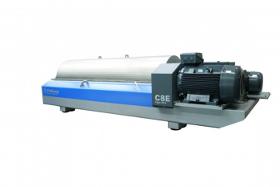
FLOTTWEG SE
Germany
Proven know-how meets state-of-the-art technology. This is the best way to describe the new Flottweg decanter C series. We also have the optimal solution for the very large wastewater treatment plants. The combination of our own Simp Drive® drive system, which has been in use since 1994, and Recuvane®, which allows flexible and simple retrofitting as well as targeted discharge of the centrate water, sets new standards for Flottweg in separation technology.
Request for a quote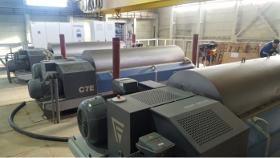
FLOTTWEG SE
Germany
Flottweg C series decanters around the world process 25 million liters of sewage sludge per hour. The dewatering and thickening of sewage sludge plays a decisive role in the wastewater treatment process. Requirements for the quality and efficiency of sewage treatment plants increase year after year, not least driven by the increasing costs of energy and disposal. As a result, the state of the art is now to use decanter centrifuges to dewater and/or thicken the incoming sludge. Flottweg developed the decanters of the C series especially for this purpose. The C7E represents the largest of all the C machines. The C7E increases the proportion of dry substance in the sludge, thereby reducing its volume and weight (due to loss of water). That means that operators need to dispose of, recycle, or burn less sludge. The result: enormous potential savings for the operators of sewage treatment plants.
Request for a quote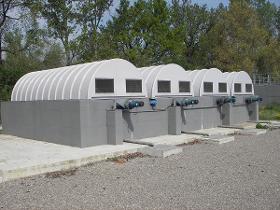
MITA WATER TECHNOLOGIES
Italy
Biodisc bio-oxidation system. Compact and modular solution, minimum energy consumption. B240 is one of the most recent series, designed to optimise the experiences acquired with the other types. It offers a range of medium to high active surfaces whilst being of limited size which facilitates their handling and installation. The series is already favoured in various installations, both civil and industrial. -Compactness and adaptability of the installations thanks to the limited dimensions -Modular installation, which allows subsequent plant expansion -Simplicity of plant management and maintenance: no need for specialist personnel -Low energy consumption, with consequent reduction of operating costs
Request for a quote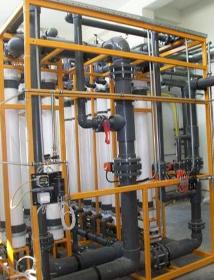
ENKI WATER TREATMENT TECH. LTD
Turkey
In comparison to conventional water treatment processes, the advantage of "ultrafiltration" as a filter technology is its superior ability to remove germs and microorganisms from water. At around 20 nm, the pores of the membrane are small enough to prevent even viruses from passing through them. "Ultrafiltration" systems are designed for fully automatic operation. A control mechanism is used to control the various operating modes of the ultrafiltration process: filtration, cleaning and backwashing. enki’s industrial ultrafiltration units are available from 25 to 500 m3/h and more . Our ultrafiltration systems are available in either Outside-In or Inside-Out configurations. Outside-In configuration UF Systems; DOW H-PVDF Hollow Fiber UF Membranes Inside-Out configuration UF Systems; Inge PESM Hollow Fiber UF Membranes
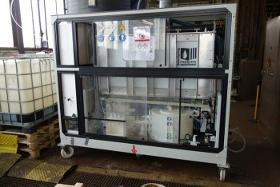
SOLARSPRING GMBH MEMBRANE SOLUTIONS
Germany
"The rEvap technology is the perfect solution for small and medium-sized companies that want to close material cycles and minimize disposal costs. The plants are equipped with a plate module. We would be pleased to carry out appropriate preliminary tests for you. Technical details: For process water / waste water up to 1 m³/h Fully automatic Controlled via Siemens SPS Adaptable according to customer requirements All channel geometries possible Suitable for endurance run"
Request for a quoteDo you sell or make similar products?
Sign up to europages and have your products listed
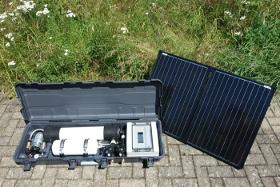
SOLARSPRING GMBH MEMBRANE SOLUTIONS
Germany
"The MBS-Outdoor from SolarSpring is a compact and innovative water treatment plant.The system guarantees a reliable and safe water supply from contaminated and microbiologically contaminated water sources without the use of Chemicals. Tecnical data: Nominal flow rate: 50-200l/h Energy consumption: 40W Weight: 22kg"
Request for a quote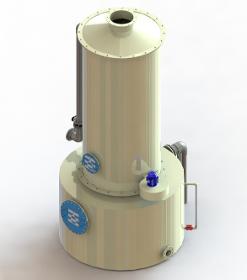
ENKI WATER TREATMENT TECH. LTD
Turkey
A "CO2 degasser" (degassifier) is a relatively simple water treatment device. Incoming water is sprayed into a tower filled with packing material. The drops of water that flow down through the tower strike the packing material and form a thin film on the packing material surface, encouraging the release of excess carbon dioxide. A centrifugal fan creates an updraft of air through the tower to carry away the released carbon dioxide gas. The carbon dioxide gas exits through a vent at the top of the unit.
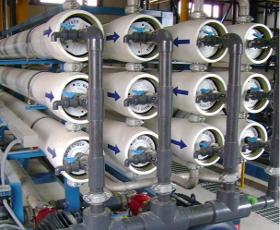
ENKI WATER TREATMENT TECH. LTD
Turkey
Reverse osmosis is the finest level of filtration available. The reverse osmosis membrane acts as a barrier to all dissolved salts and inorganic molecules, as well as organic molecules with a molecular weight greater than approximately 100. Water molecules, on the other hand, pass freely through the membrane creating a purified product stream. Rejection of dissolved salts is typically 95% to greater than 99%. Classification of brackish water: • Low salinity brackish waters: up to 5.000 ppm • High salinity brackish waters: between 5.000 - 15.000 ppm • Sea water: up to 45.000 ppm Reverse osmosis is a technology that is used in the production of ultrapure water for use in the semiconductor industry, power industry (boiler feed water), and medical/laboratory applications. Utilizing reverse osmosis prior to ion exchanger dramatically reduces operating costs and regeneration frequency of the Ionen exchanger plant.
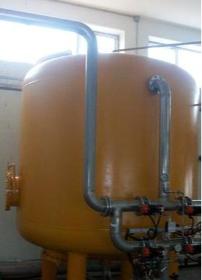
ENKI WATER TREATMENT TECH. LTD
Turkey
When is used an activated carbon filter? Activated carbon filters are very similar to multi media filters and other pressure filters in construction and operation. The purpose of an activated carbon filter is to remove free chlorine, an oxidizing agent that will damage most resins and/or membranes in a water treatment system. A chemical injection system using sodium bisulfite (a reducing agent) can be used in place of an activated carbon filter to remove chlorine. Granular activated carbon is a particularly good adsorbent medium due to its high surface area to volume ratio. One gram of a typical commercial activated carbon will have a surface area equivalent to 850-1.000 square meters. This high surface area permits the accumulation of a large number of contaminant molecules. Some drinking water may be disinfected with chlorine or chloramines.
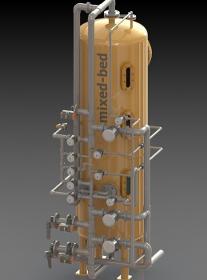
ENKI WATER TREATMENT TECH. LTD
Turkey
Both cation and anion resin can be feed in to an ion exchanger tank and mixed to create a mixedbed ion exchanger. A mixedbed ion exchanger is more complicated than other types of ion exchangers because it has to separate and regenerate the two resins. The carefull mixing of the cation and anion resin allows a very high degree of deionization. Mixed bed ion exchangers produce the highest quality demineralized water of any of the ion exchanger units. Working mixedbed ion exchangers deionize water with up to 50 ppm TDS (Total Dissolved Solids). Polishing mixedbed ion exchangers are located after cation and anion exchangers or reverse osmosis units Strong acid cation and strong base anion resins are used in mixedbed ion exchangers, as complete demineralization is the objective. A small volume of inert resin can also be used to facilitate separation of the cation and anion resin beads during regeneration
Results for
Waste water treatment systems for industry - Import exportNumber of results
11 ProductsCountries
Company type